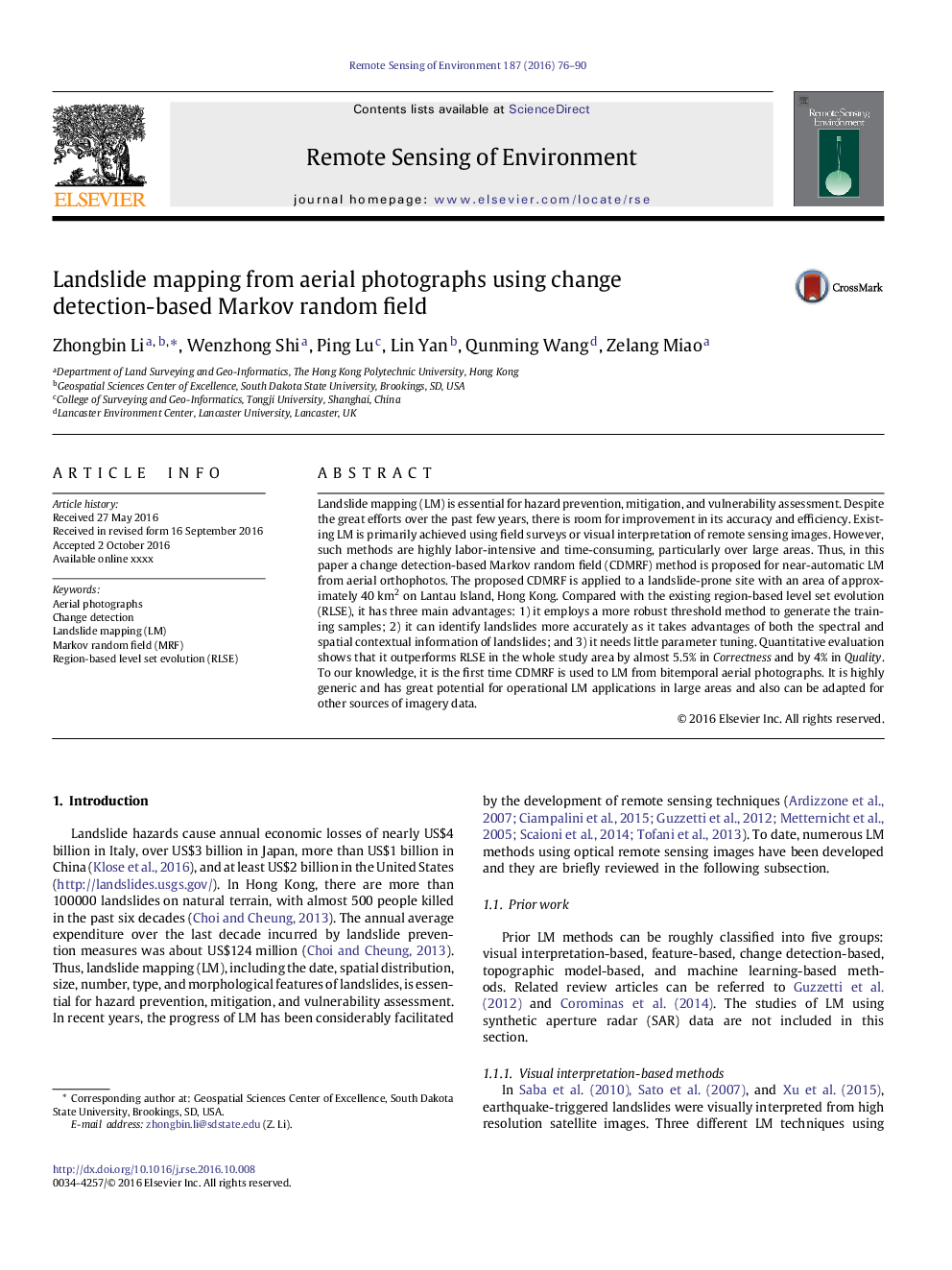| Article ID | Journal | Published Year | Pages | File Type |
|---|---|---|---|---|
| 6344817 | Remote Sensing of Environment | 2016 | 15 Pages |
Abstract
Landslide mapping (LM) is essential for hazard prevention, mitigation, and vulnerability assessment. Despite the great efforts over the past few years, there is room for improvement in its accuracy and efficiency. Existing LM is primarily achieved using field surveys or visual interpretation of remote sensing images. However, such methods are highly labor-intensive and time-consuming, particularly over large areas. Thus, in this paper a change detection-based Markov random field (CDMRF) method is proposed for near-automatic LM from aerial orthophotos. The proposed CDMRF is applied to a landslide-prone site with an area of approximately 40Â km2 on Lantau Island, Hong Kong. Compared with the existing region-based level set evolution (RLSE), it has three main advantages: 1) it employs a more robust threshold method to generate the training samples; 2) it can identify landslides more accurately as it takes advantages of both the spectral and spatial contextual information of landslides; and 3) it needs little parameter tuning. Quantitative evaluation shows that it outperforms RLSE in the whole study area by almost 5.5% in Correctness and by 4% in Quality. To our knowledge, it is the first time CDMRF is used to LM from bitemporal aerial photographs. It is highly generic and has great potential for operational LM applications in large areas and also can be adapted for other sources of imagery data.
Related Topics
Physical Sciences and Engineering
Earth and Planetary Sciences
Computers in Earth Sciences
Authors
Zhongbin Li, Wenzhong Shi, Ping Lu, Lin Yan, Qunming Wang, Zelang Miao,
